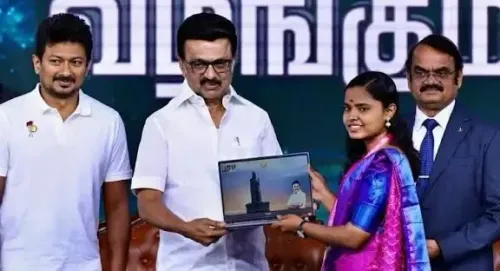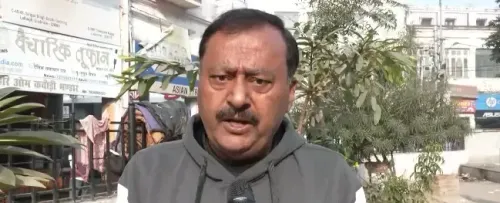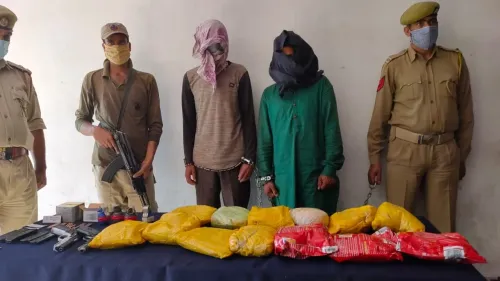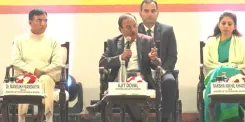Why Did Calcutta HC Stop Police Action Against Teachers?
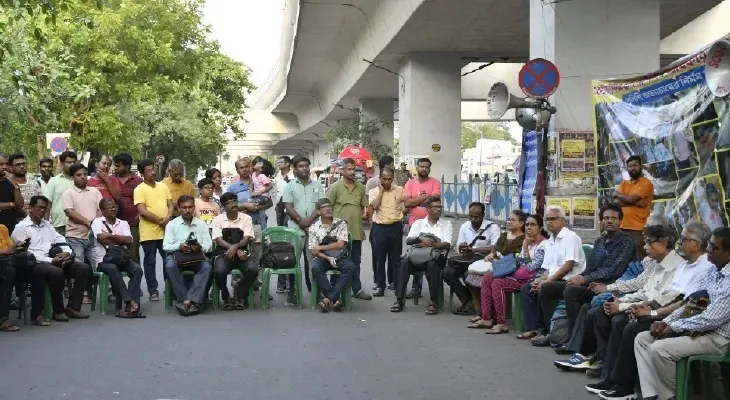
Synopsis
Key Takeaways
- Calcutta High Court halts police action against teachers.
- Protests arise due to job terminations post-Supreme Court ruling.
- Teachers demand transparency in job allocations.
- Police faced accusations of excessive force during protests.
- New protest location and arrangements mandated by the court.
Kolkata, May 23 (NationPress) A single-judge bench of the Calcutta High Court has, on Friday, prohibited the Bidhannagar Police from executing any coercive measures, including arrests, against “untainted” or “genuine” teachers named in FIRs due to their protests outside the state education department headquarters.
The teachers have been demonstrating after the loss of their jobs following a Supreme Court ruling last month.
These teachers, from both the secondary and higher secondary sectors, have gathered in front of the state education department headquarters, demanding the urgent release of a list that distinguishes “untainted” candidates from “tainted” ones who obtained school positions through illicit payments.
On May 15, tensions escalated when a faction of protesting teachers forcibly unlocked the main gate of Bikas Bhavan, the state education department's headquarters in Salt Lake, on the northern outskirts of Kolkata, and entered the premises. That night, police resorted to cane charges against the demonstrators, resulting in numerous injuries among the protesters.
A case was subsequently filed at the Calcutta High Court, accusing the police of excessive force. Meanwhile, the Bidhannagar Police Commissionerate filed FIRs against certain protesting teachers for alleged vandalism, unlawful detention of state government employees, and hindering their official duties.
Concurrently, the West Bengal Board of Secondary Education (WBBSE) began issuing show-cause notices to some of the protesting educators.
Following several hearings, the Calcutta High Court's single-judge bench, led by Justice Tirthankar Ghosh, ruled that the police cannot take coercive action, including arrests, against the teachers implicated in the FIRs until further notice.
Justice Ghosh also stated that the show-cause notices issued by the WBBSE to some of these teachers would remain ineffective until further orders. However, he confirmed that the investigation into the matters would proceed as usual.
Justice Ghosh also instructed the protesting teachers to relocate their sit-in demonstration from Bikas Bhavan to a nearby area adjacent to a swimming pool. The court mandated the administration to provide tents, bio-toilets, and drinking water for the protesting teachers.
Furthermore, Justice Ghosh ruled that no more than 200 demonstrators would be permitted to gather at the new sit-in location.
On April 3 of this year, a division bench of the Supreme Court, led by former Chief Justice of India Sanjiv Khanna and Justice Sanjay Kumar, upheld a previous ruling by the Calcutta High Court's division bench that annulled 25,753 school jobs in West Bengal.
The apex court also endorsed the Calcutta High Court's observation that the entire panel of 25,753 candidates had to be invalidated due to the state government's failure to differentiate between “untainted” and “tainted” candidates.
Both the state government and the West Bengal School Service Commission (WBSSC) have already filed review petitions with the apex court regarding this issue.


